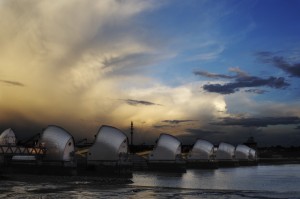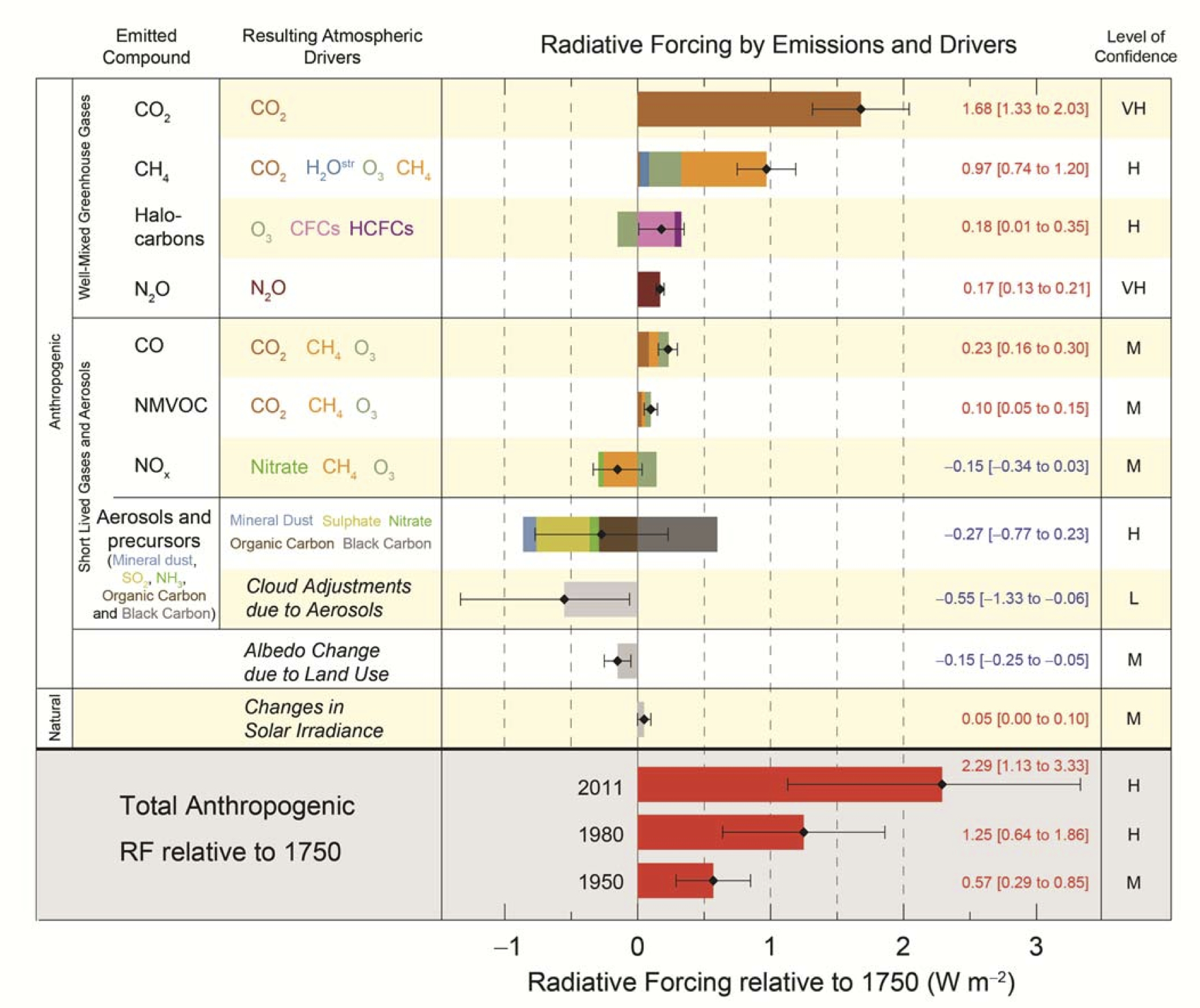 Back in 2007 I wrote a post looking at the closures of the Thames Barrier since construction finished in 1983. Since then there has been another 7 years of data* and given that there was a spate of closures last week due to both river and tidal flooding, it seems a good time to revisit the topic.
Back in 2007 I wrote a post looking at the closures of the Thames Barrier since construction finished in 1983. Since then there has been another 7 years of data* and given that there was a spate of closures last week due to both river and tidal flooding, it seems a good time to revisit the topic.
AGU talk on science and advocacy
We have often discussed issues related to science communication on this site, and the comment threads frequently return to the issue of advocacy, the role of scientists and the notion of responsibility. Some videos from the recent AGU meeting are starting to be uploaded to the AGU Youtube channel and, oddly, the first video of a talk is my Stephen Schneider lecture on what climate scientists should advocate for (though actually, it mostly about how science communicators should think about advocacy in general since the principles are applicable regardless of the subject area):
The IPCC AR5 attribution statement
Last year I discussed the basis of the AR4 attribution statement:
Most of the observed increase in global average temperatures since the mid-20th century is very likely due to the observed increase in anthropogenic greenhouse gas concentrations.
In the new AR5 SPM (pdf), there is an analogous statement:
It is extremely likely that more than half of the observed increase in global average surface temperature from 1951 to 2010 was caused by the anthropogenic increase in greenhouse gas concentrations and other anthropogenic forcings together. The best estimate of the human-induced contribution to warming is similar to the observed warming over this period.
This includes differences in the likelihood statement, drivers and a new statement on the most likely amount of anthropogenic warming.
The evolution of radiative forcing bar-charts
As part of the IPCC WG1 SPM (pdf) released last Friday, there was a subtle, but important, change in one of the key figures – the radiative forcing bar-chart (Fig. SPM.4). The concept for this figure has been a mainstay of summaries of climate change science for decades, and the evolution over time is a good example of how thinking and understanding has progressed over the years while the big picture has not shifted much.
The Radiative-Forcing bar chart: AR5 version

[Read more…] about The evolution of radiative forcing bar-charts
On mismatches between models and observations
It is a truism that all models are wrong. Just as no map can capture the real landscape and no portrait the true self, numerical models by necessity have to contain approximations to the complexity of the real world and so can never be perfect replications of reality. Similarly, any specific observations are only partial reflections of what is actually happening and have multiple sources of error. It is therefore to be expected that there will be discrepancies between models and observations. However, why these arise and what one should conclude from them are interesting and more subtle than most people realise. Indeed, such discrepancies are the classic way we learn something new – and it often isn’t what people first thought of.
[Read more…] about On mismatches between models and observations
Arctic misrepresentations
At the weekend, Christopher Booker at the Daily Telegraph made another attempt (see previous) to downplay the obvious decreases in Arctic sea ice by (mis-)quoting a statement from Arctic oceanographer Ken Drinkwater and colleagues:
[Read more…] about Arctic misrepresentations
AGU Chapman Conference on Climate Science Communication
A couple of weeks ago, there was a small conference on Climate Science communication run by the AGU. Both Mike and I attended, but it was very notable that it wasn’t just scientists attending – there were also entertainers, psychologists, film-makers and historians. There were a lot of quite diverse perspectives and many discussions about the what’s, why’s and how’s of climate science communication.
There were a couple of notable features: the conference had a lively twitter hashtag (#climatechapman), and almost the entire proceedings were webcast live (schedule). The video from this has now been posted on YouTube in more bite-sized chunks.
While our own presentations (Mike here and Gavin here) are available, it is worth watching the presentations from people you might not have heard of, as well as a few from more established people. We’ll embed a few here, but please point out some of the other ones of interest in the comments.
[Read more…] about AGU Chapman Conference on Climate Science Communication
2012 Updates to model-observation comparisons
Time for the 2012 updates!
As has become a habit (2009, 2010, 2011), here is a brief overview and update of some of the most discussed model/observation comparisons, updated to include 2012. I include comparisons of surface temperatures, sea ice and ocean heat content to the CMIP3 and Hansen et al (1988) simulations.
[Read more…] about 2012 Updates to model-observation comparisons
What to study?
I recently got an email from newly graduated Math(s) major (mildly edited):
I am someone with a deep-seated desire to help the planet remain as habitable as possible in the face of the trials humanity is putting it through. I’d like to devote my career to this cause, but am young and haven’t chosen a definitive career path yet. My bachelors is in pure math and I am considering graduate study in either applied math or statistics. I’m curious what you would recommend to someone in my position. Between getting, say, a PhD in statistics vs. one in applied math, what positions me best for a career in the climate science community? What are its acute needs, where are the job opportunities, and how competitive is it?
My response was as follows (also slightly edited):
As you may know I too started out as a mathematician, and then moved to more climate related applications only in my post-doc(s).
I can’t possibly give you ‘the’ answer to your question – but I do suggest working from the top down. What do you see specifically as something where someone like you could have maximum impact? Then acquire the skills needed to make that happen. If that seems too hard to do now, spend time on the developing your basic toolkits – Bayesian approaches to statistics, forward modeling, some high level coding languages (R, python, matlab etc.), while reading widely about applications.
One of the things I appreciated most in finding my niche was being exposed to a very large number of topics – which while bewildering at the start, in the end allowed me to see the gaps where I could be most useful. At all times though, I pursued approaches and topics that were somewhat aesthetically pleasing to me, which is to say, I didn’t just take up problems just for the sake of it.
I’ve found that I get more satisifaction from focusing on making some progress related to big problems, rather than finding complete solutions to minor issues, but this probably differs from person to person.
But what do other people think? How should people prepare to work on important problems? Are there any general rules? What advice did people give you when you were starting out? Was it useful, or not? Any advice – from existing researchers, graduate students or interested public – will be welcome.
On sensitivity: Part I
Climate sensitivity is a perennial topic here, so the multiple new papers and discussions around the issue, each with different perspectives, are worth discussing. Since this can be a complicated topic, I’ll focus in this post on the credible work being published. There’ll be a second part from Karen Shell, and in a follow-on post I’ll comment on some of the recent games being played in and around the Wall Street Journal op-ed pages.